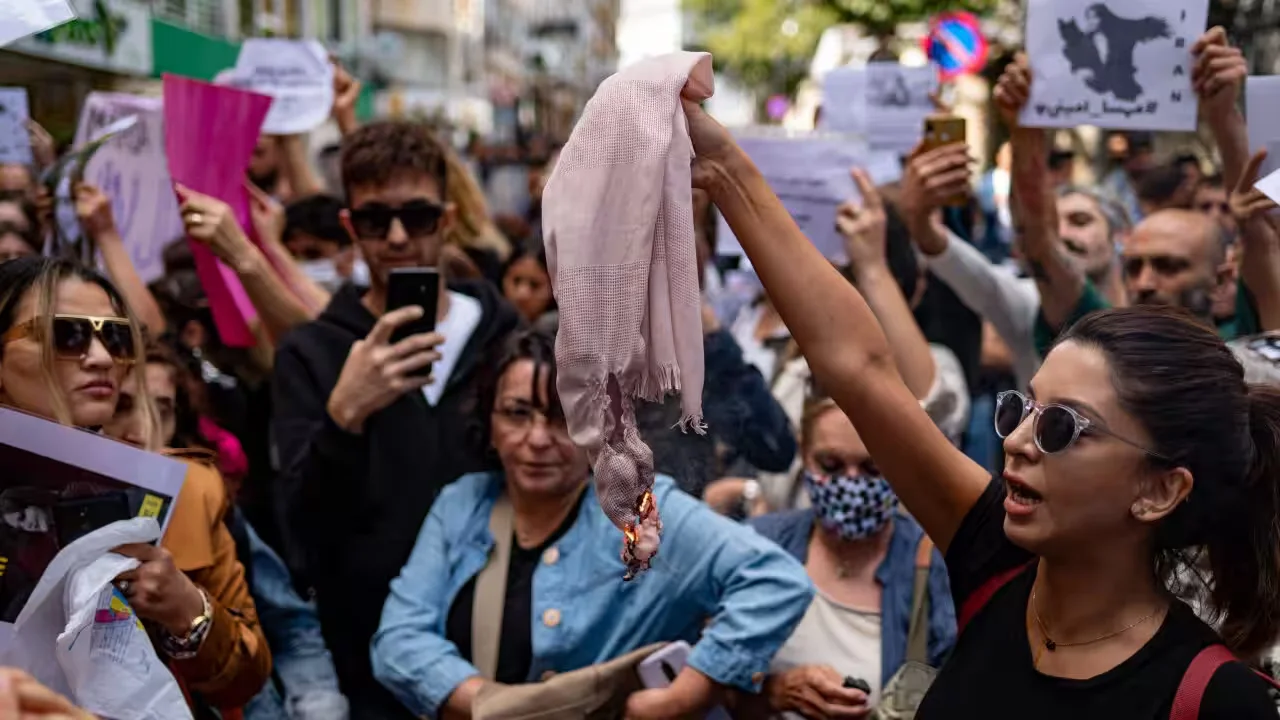Iran is once again at the center of attention as authorities consider a new and harsh law targeting hijab-wearing, a move that has raised alarm among human rights advocates and triggered concerns about the erosion of personal freedoms. CNN recently reported that a 70-article draft law is being proposed, aiming to introduce stringent punitive measures for those who fail to comply with the country’s strict dress code.
The timing of this controversial proposal is significant, as it comes just ahead of the first anniversary of Mahsa Amini’s death, an event that ignited widespread protests across Iran. Mahsa Amini, a 22-year-old model from Iran’s Kurdistan region, died while in the custody of the country’s morality police in September 2022. She was allegedly detained for wearing what authorities deemed “inappropriate attire,” leading to public outrage and demonstrations.
The draft law outlines several far-reaching proposals, including much longer prison terms for women who refuse to wear the hijab, stricter penalties for celebrities and businesses that do not adhere to the rules, and the use of artificial intelligence to identify individuals in breach of the dress code.
Experts believe that the proposed legislation is a clear message from the Iranian regime, reaffirming its unwavering stance on the hijab despite the widespread dissent witnessed during the protests last year. The bill, if implemented, would significantly escalate the severity of punishments for hijab-related offenses.
Under the current law, a breach of the dress code carries a punishment of 10 days to two months imprisonment or a fine ranging from 50,000 to 500,000 Iranian rials ($1.18 to $11.82). However, the new bill seeks to reclassify non-compliance with hijab regulations as a much more severe offense, punishable by a five-to-ten-year prison sentence, along with a substantially higher fine of up to 360 million Iranian rials ($8,508). These penalties could prove exorbitant for the average Iranian, making it a matter of concern for many.
Moreover, the proposal also aims to empower law enforcement by mandating the creation and enhancement of artificial intelligence systems to identify and apprehend those deemed to be in violation of the dress code. This could lead to increased surveillance and monitoring of citizens, further raising concerns about privacy and individual rights.
The draft law also proposes stricter gender segregation in colleges and public spaces, exacerbating the control over women’s freedom and mobility.
Critics of the proposed legislation argue that it reflects the Iranian regime’s efforts to exert authority over veiling and to suppress dissenting voices. They fear that the bill, if passed, would further restrict personal freedoms and discourage public dissent.
As Iran marks the first anniversary of the protests following Mahsa Amini’s death, the proposed hijab law has already sparked public outcry. The bill has received approval from Iran’s Legal and Judicial Commission and is set to be presented to the Board of Governors before being tabled in the parliament. While it remains uncertain whether the entire proposal will pass, the potential implications of such a law are raising concerns both within the country and internationally.
Human rights advocates are closely monitoring the situation, calling on the Iranian authorities to respect and protect the rights and dignity of their citizens. As the debate over the hijab law intensifies, the world awaits the outcome and implications of this highly controversial proposal.




